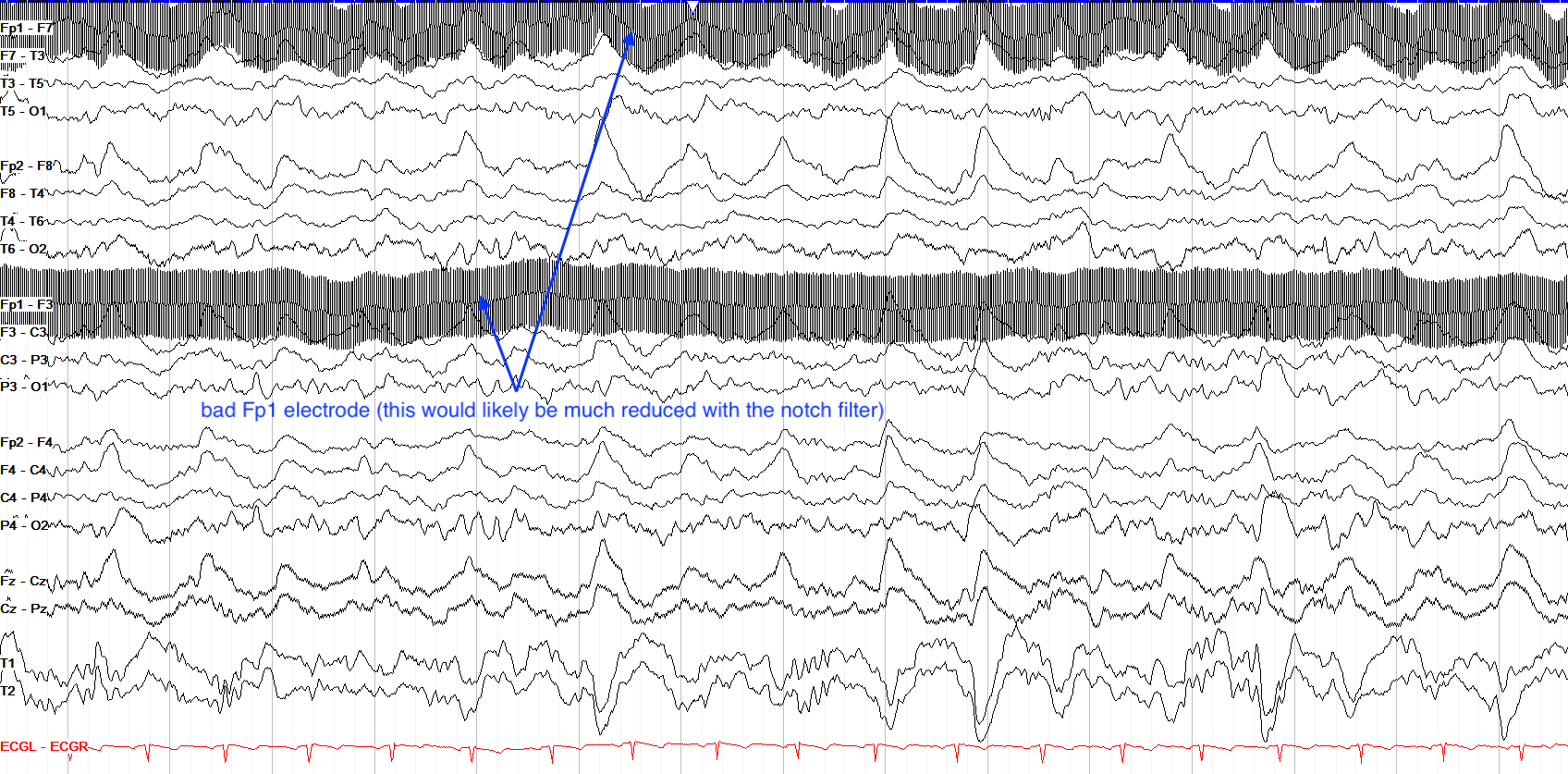Ohm’s Law
Kobe Christensen and Jim Hutchins
OHM’S LAW IN EEG
Introduction
Understanding the basics of electrical circuits is crucial for recording clear, unimpeded EEG data. One of the most important concepts in circuits is Ohm’s Law. Ohm’s law is a simple mathematic rule that helps us understand the relationship between voltage, current and resistance. This chapter will explain Ohm’s Law, how it impacts the quality of an EEG signal, and what you need to know on test day.
Ohm’s Law Formula
The Ohm’s Law formula shows how three parts of an electrical circuit relate to one another.
V = I × R
where:
V = Voltage (Measured in volts)
I = Current (Measured in amperes)
R = Resistance (Measured in ohms)
Figure ___ A circuit diagram showing a resistor, a current, and a voltage source. GorillaWarfare, CC0, via Wikimedia Commons
Here, (V) voltage is the “Push” that drives (I) electrical current through the circuit. Anything that resists this current is (R) resistance.
Electricity in a circuit is often compared to the flow of water. A commonly used analogy is that of a garden hose. Voltage in analogous to the water pressure coming from the spicket attached to the hose. The amount of water pushed through the house is analogous to current in the circuit. Imagine a kink in the hose that slows down the flow of water, this is analogous to resistance in the circuit.
Just as higher water pressure will push more water through the hose, higher voltage will push more electrical current through the circuit. Similarly, adding more resistance will reduce the flow of current.
Ohm’s Law in EEG
In EEG, small postsynaptic potentials produced by pyramidal neurons are measured by electrodes. Ohm’s law gives insight into how these signals travel from the brain, through the electrodes and into the EEG machine.
Voltage (V): In EEG, voltage represents the difference in electrical potential between two electrodes. As described in chapter (), it is this voltage difference that gives us an EEG signal.
Current (I): While small, there must be a current that carries the signal from the scalp to the EEG machine.
Resistance (R): Resistance in EEG occurs mainly at the scalp-electrode interface. It is this piece of Ohm’s Law that an EEG tech is most concerned with when applying electrodes as high resistance will block or distort reducing the quality of an EEG recording. This resistance (measured in Ohms) is checked when an EEG tech runs an impedance check.
How Resistance Impacts EEG Recording
High resistance can distort and even block signals from the brain coming to the EEG machine. When resistance is too high, noisy signals will make the EEG recording less clear. Below is an example of 60 Hz artifact that came as a result of poor connection of the electrode at the scalp.

Figure () Showing 60 Hz artifact as a result of poor connection at the scalp-electrode interface. From “Artifacts”, by David Valentine M.D., 2020, (https://www.learningeeg.com/artifacts). Copyright 2020 by David Valentine
Keeping the analogy of water flow, imagine a dam that is blocking a river. If the dam is a tall strong dam (High resistance to the flow of water), then only a small amount of water may be allowed through. In EEG, if there is too much resistance at the site of the electrode, only a small fraction of voltage from the brain’s electrical signal is going to reach the EEG machine.
Applying Ohm’s Law Clinically
Understanding how resistance impacts the quality of an EEG, it’s important to understand how an EEG technologist can protect the integrity of the study by keeping resistance low. Steps that are typically taken are:
Skin Preparation: Cleaning the scalp which gently removes debris and dead skin at the surface reduces resistance by improving electrode contact.
Electrode Paste: Using a proper amount of conductive paste will help improve the connection between the skin and electrode by increasing the ability of the current to travel through this space. Too little electrode paste will not increase conductivity enough to allow the signals to travel through the electrode, but using too much paste can increase the surface area of conductivity and the signal may be lost.
Impedance Checks: EEG machines allow you to check impedance which measures the resistance (In Ohms) at each scalp-electrode interface. Keeping impedances low helps ensure a quality EEG signal. The ACNS guidelines recommend keeping impedances less than 10 kOhms, however in practice many facilities will require that impedances are less than 5 kOhms to ensure a quality study.
Video
Key Takeaways
- Ohm’s Law relates voltage, current, and resistance in a circuit using the equation V = I × R.
- Voltage is the push that sends an electrical current through a circuit. Anything that impedes that flow is called resistance.
- Ensuring there is low resistance in at the scalp-electrode interface is critical to having a clear EEG recording.
H5P


